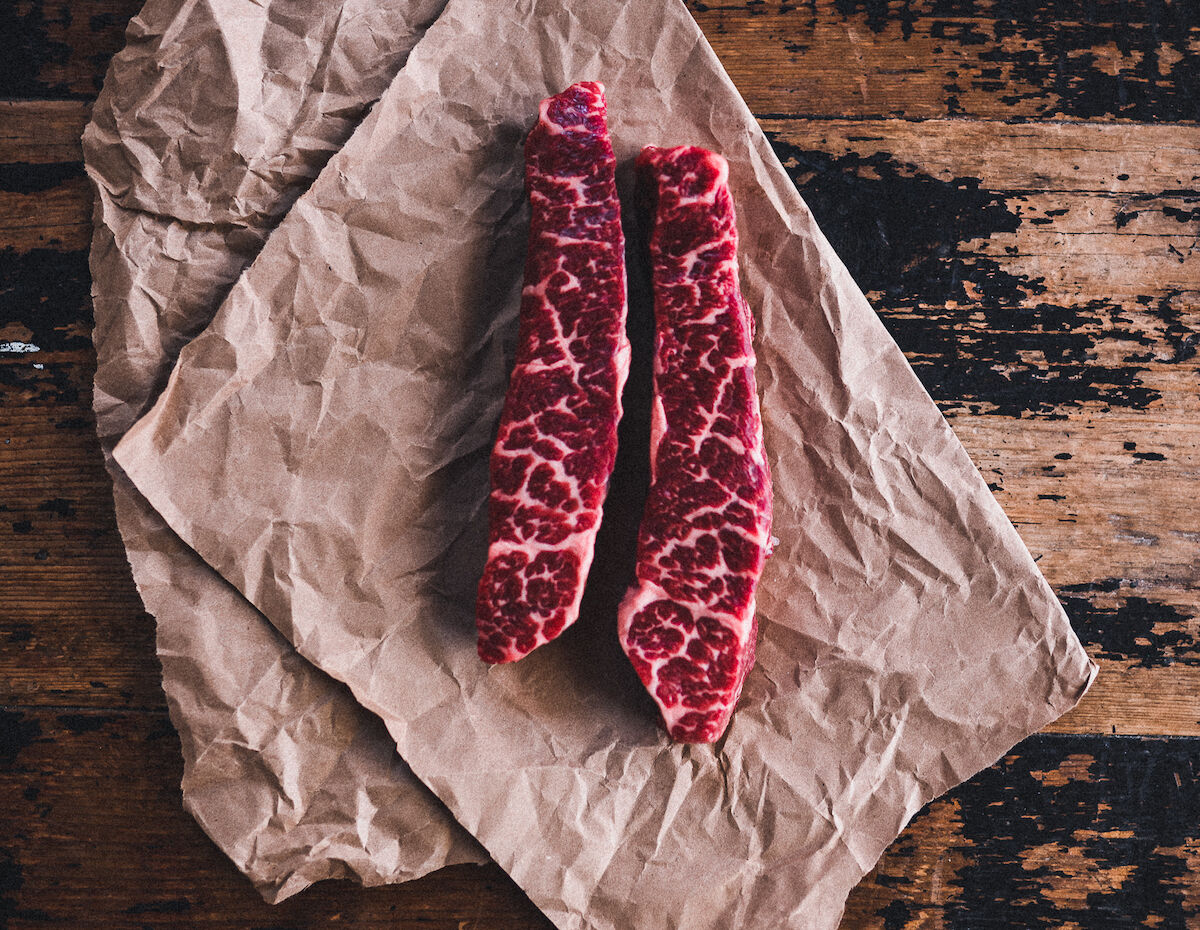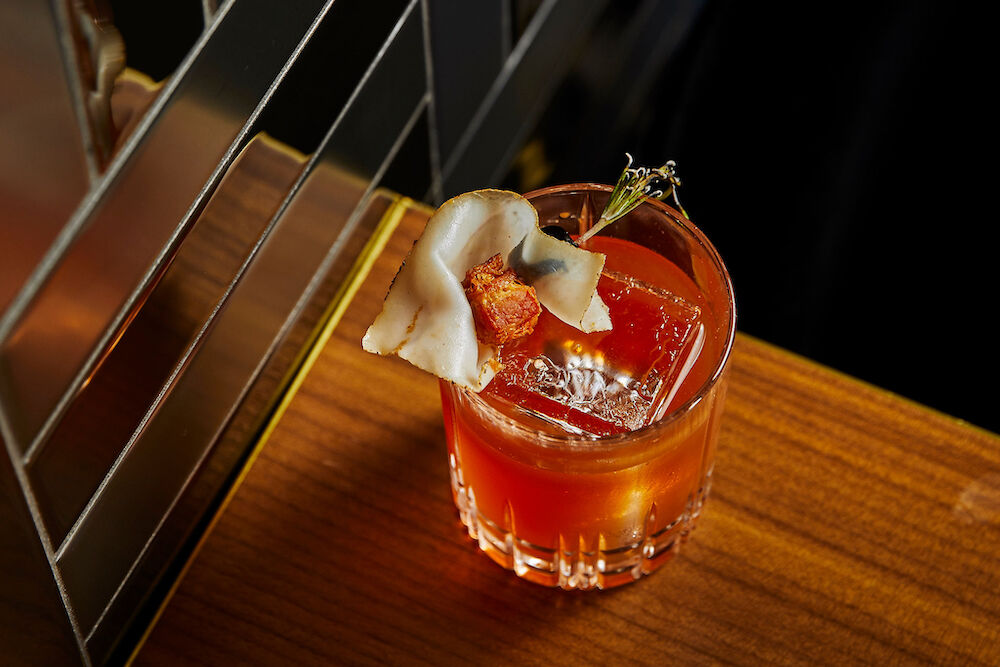
Over the past year, the price of beef has risen roughly 16 percent.
Tavahi Owen
Some people live by the mantra “carpe diem,”which is honorable. More often, I find myself a “seize the craving” gal. Recently, I had a hankering for steak. But not just any steak would do. I wanted—I mean, yearned, with an old-fashioned urgency—for a Denver steak, the melt-in-your-mouth, well-marbled cut that comes from under the shoulder blade. It took little convincing to get my husband in the car and over to one of our favorite date spots, Rare Society. I promptly put in my standard order for an old-fashioned and began scanning the menu. And scanning… and scanning…
No Denver steak.
The steaks have never been lower.
The overall index of food prices has risen 8.8% in March from last year, the largest annual increase since MTV and mullets made their debut. The price of beef has risen roughly 16% over the past year. These jumps are due to a multitude of factors—the war in Ukraine, parts and labor shortages, absurdly high gas prices, rising costs for raw materials, crop supplies, and much more. “Right now in my inventory book there’s nothing going down and no reason for it to go down,” says Derek Stephens, a sales representative with West Coast Prime Meats. “People got out of a pandemic, had a little bit of money saved up and all of a sudden, everyone developed this taste for really high-end meat. That’s a trend that’s going to last until we hit some crazy recession.”
“I feel like the demand is still there,” concurs Brian Smith, owner of The Butchery. “As prices continue to climb, demand will slow simply because people can’t afford it anymore. And that’s the checks and balances in the system.”
Stephens goes on to explain that the cost of rearing animals has also increased, causing a ripple effect through the industry. “Demand is up a little bit and supply is flat, so people are competing for products and it’s driving pricing up as well as the input cost.”
Chef Brad Wise (Trust, Fort Oak, Rare Society, Cardellino), puts it in primal terms. “When you cut an entire cow, you get the left side and the right side; there’s two rib-eye lines and two primals. So you’re getting two pieces.” The competition for these prime cuts extends globally to include restaurants and butchers in countries like China and Japan, who are willing to pay more for beef. Wise says it’s not just a supply issue—he can still purchase any cut of meat he chooses—it’s a ripple effect from the last two years. Where prices used to fluctuate $1 to $2, in November 2021 the price of some items increased 40 to 60 percent, which is unheard of.

This old fashioned—featuring dry-aged fat-washed bourbon with rosemary oleo and bitters—is one example of how Rare Society is eliminating waste in light of the rising beef prices
Matt Furman
For butcheries, absorbing some of these costs is part of the game they have to play. For restaurants, absorbing those costs is a different story; restaurant customers are highly sensitive to price increases, especially when they’re steep as this. “When you’re backed up into a wall, you gotta get a little more creative,” says Wise. “This is one of those things where prices aren’t going down, so now we really need to have zero waste.” Trust Restaurant Group has figured out an internal system to ensure a zero-waste approach to their beef, from using beef fat in cocktails (their dry-aged fat-washed bourbon with rosemary oleo and bitters is a must-try) to making custom ground beef blends, beef butters, tallow-fat fries, and more.
Restaurants that aren’t part of a group are also finding ways to band together for zero-waste endeavors. For instance, Davin and Jessica Waite of Wrench and Rodent Seabasstropub use their dry-aging lockers to make wagyu beef fat lardo from excess trim that chef William Eick of Matsu sends them. The folks over at Ranch 45 are taking things one step further by using beef fat to make their own soap.
“The number-one topic of conversation in the restaurant is trying to figure out at what point raising prices is going to price us out of the market,” says owner and manager Pam Schwartz. Ranch 45 raised prices across the board by $0.50 (“It really should’ve been $1.50,” Schwartz says) while also finding ways to get creative with the menu, like using beef fat for cooking, rendering it down for tallow, and selling it in jars. “We’re using it in brownies, ice cream, caramel sauces. We’re experimenting with different cuts of meat right now, cuts that are in abundant supply and aren’t as expensive. We’re trying things like a pulled beef sandwich and barbacoa tacos.”
Schwartz describes adamantly encouraging her kitchen staff to scrape out every last drop of beef fat from containers. “The way I look at it is that every single thing that goes in the trash amounts to revenue. So how do we keep everything out of the trash and turn it into something we can use to make a profit?”
Despite the increase in prices being nominal and portion sizes remaining the same, Schwartz reports pushback from customers who expect the higher cost to mean more value. “We have this very small restaurant and we try to support our local farmers and local community,” she says, listing Brandt Beef and Chino Farms as two of her top suppliers. “You’re getting high-quality products that you’re not going to get at a better value price. We’re trying to keep everything local and trying to keep other people in business as well. That’s what our customers don’t see.”



















